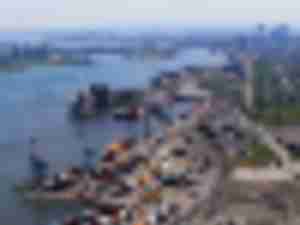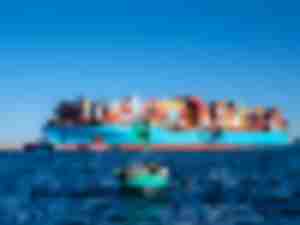Guangzhou (Nansha) port inaugurates sea-rail transport service to Europe
Xinhua is reporting that Guangzhou Port, located in south China's Guangdong Province, on April 29th launched a combined sea-rail transportation service to Europe.
Port of Montreal re-opens after legislation forces striking dockers back to work
Operations began gradually returning to normal Saturday at the Port of Montreal after the Canadian federal government rushed through legislation late Friday forcing some 1,150 striking dockers back to work.
Lock and dam system for Honolulu? Is this just the beginning?
Hawaii Harbors Division urges study of lock and dam system for Honolulu Harbor as sea levels rise. Will others follow?
Montreal dockers launch strike ahead of possible government intervention
More than 1,100 Montreal dockers today began an unlimited strike that shut down almost all operations at Canada’s second largest port engulfed in one of the longest labour conflicts in its history.
Ocean carriers may fund $6 billion project to decarbonize marine engines by 2050
In June, the International Maritime Organization (IMO) will be reviewing a plan to assess ocean carriers between U.S. $5-to-6 billion dollars to develop alternative fuels that will substantially decarbonize marine engines by 2050, according to John Butler, President of the World Shipping Council.
LA’s Seroka projects 10M annual TEUs for fiscal year 2021
Port of Los Angeles Executive Director Gene Seroka is projecting the Port will handle over 10 million annual TEUs by the fiscal year ending June 30th, 2021 making it “the first port in North America to do so.”
Port of Montreal President slams partial strike move by dockers
With the mounting prolonged waterfront labour conflict reaching the point where dockers plan to cease working overtime indefinitely as of today and on weekends this Saturday, the Montreal Port Authority’s newly-installed President and CEO, Martin Imbleau, issued a sharply-worded statement striking out at the potential impact on the Canadian economy and the competitiveness of Canada’s second biggest port of a vital public service being “offered on a part-time basis.”
NWSA’s Wolfe cites three new services & no congestion in “The State of the Alliance 2021”
Northwest Seaport Alliance (NWSA) chief executive officer, John Wolfe, reported in his ‘State of the Alliance 2021’ that three new vessel services create additional links with Asia and that there is “little cause for congestion” at the NWSA member ports of Seattle and Tacoma.
Redwood City’s Zortman “cautiously optimistic” about 2021 but port faces dredging challenges
The Port of Redwood City is “cautiously optimistic” about 2021 cargo volumes for imports and exports but the lack of annual ship channel dredging is allowing shoaling to worsen. The result is delays and higher costs for loading and unloading of vessels, according to Executive Director Kristine Zortman.
FMC orders 10 ocean carriers and 17 marine terminals to report on demurrage and detention practices
In response to complaints by U.S. exporters and Democratic and Republican Congressional representatives, the U.S. Federal Maritime Commission (FMC) announced that it was ordering 10 ocean carriers and 17 marine terminals to report on demurrage and detention practices and penalties assessed on shippers as well as the availability of empty containers for U.S. exporters to ship their goods.
© Copyright 1999–2025 American Journal of Transportation. All Rights Reserved











